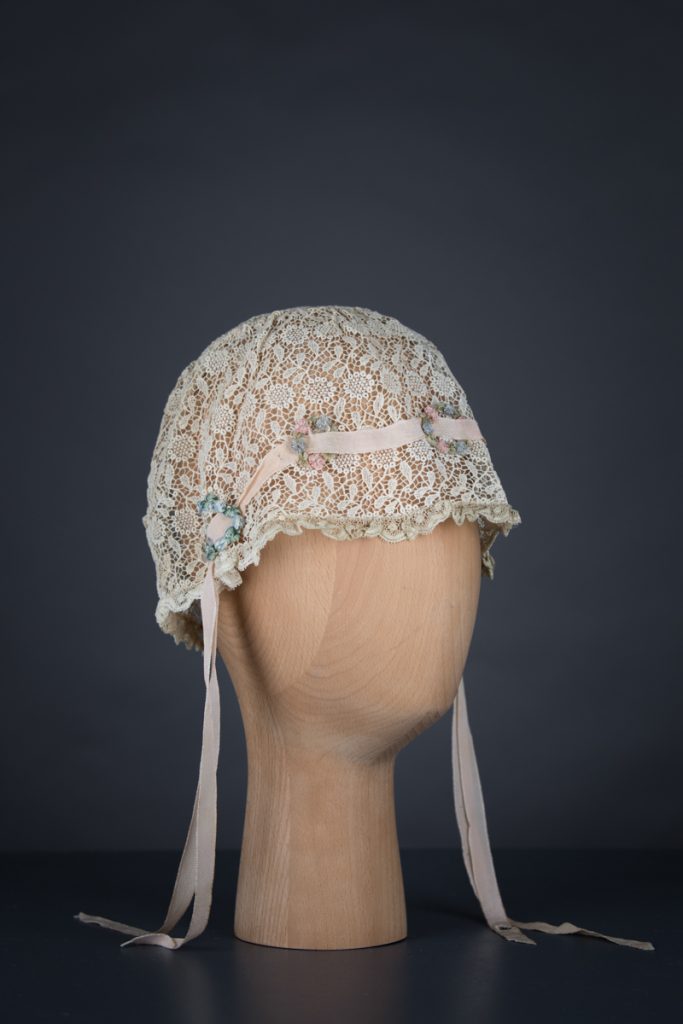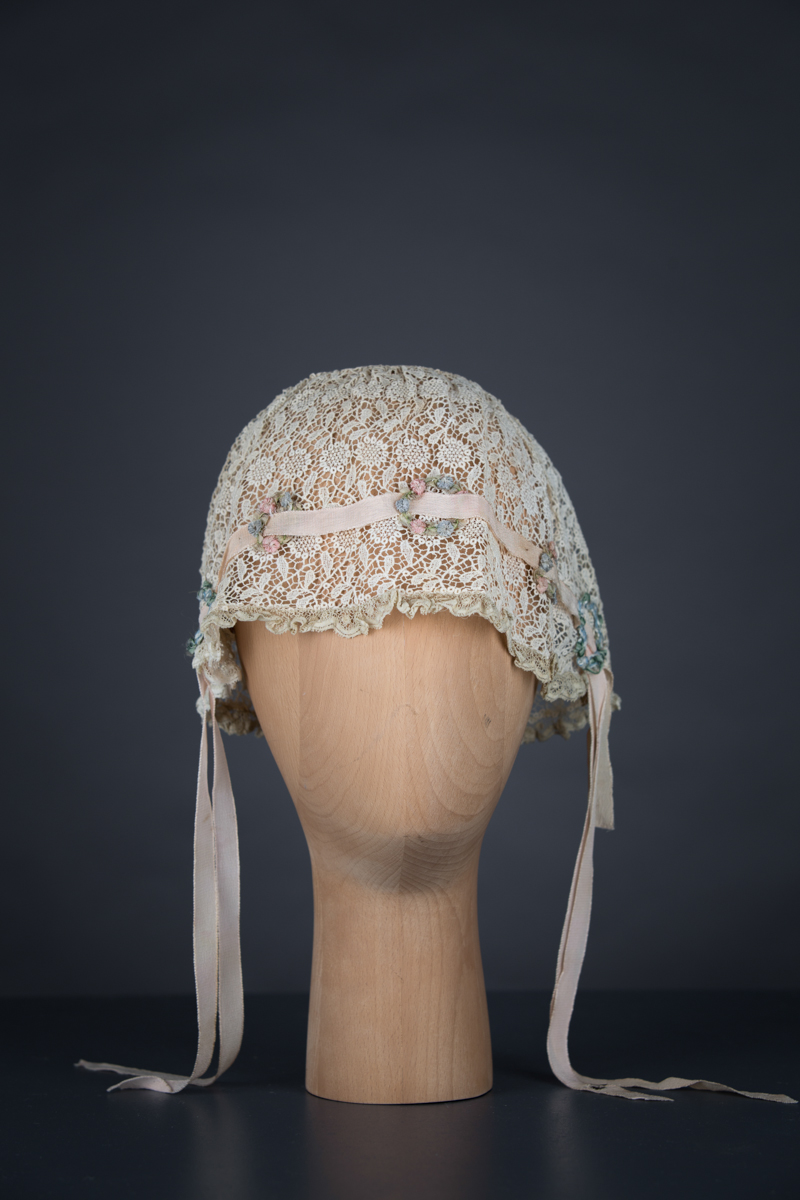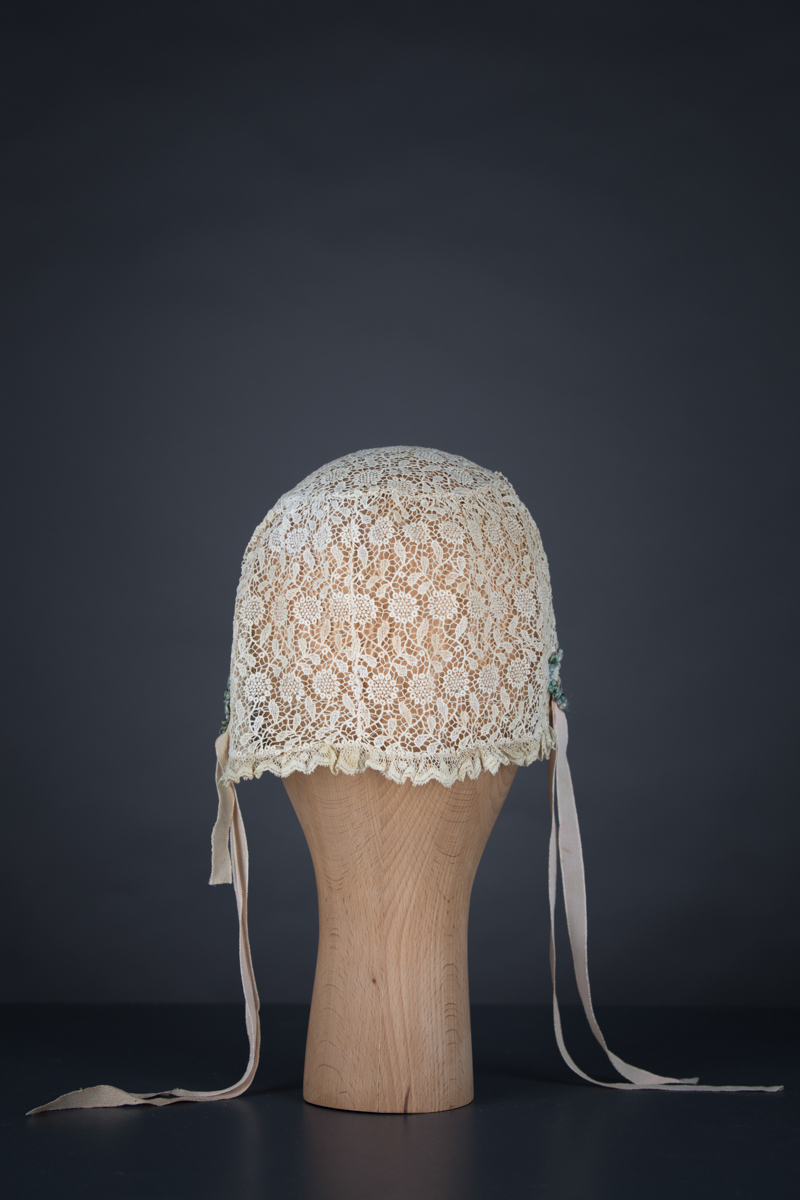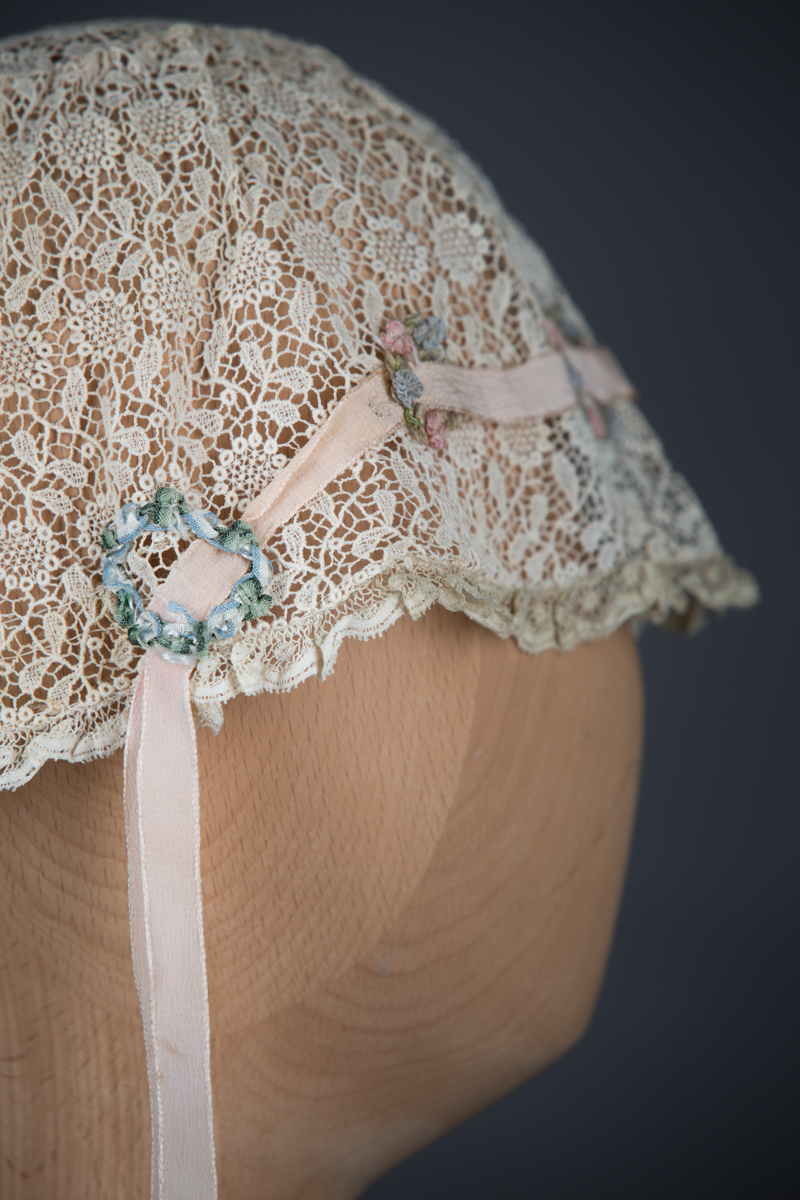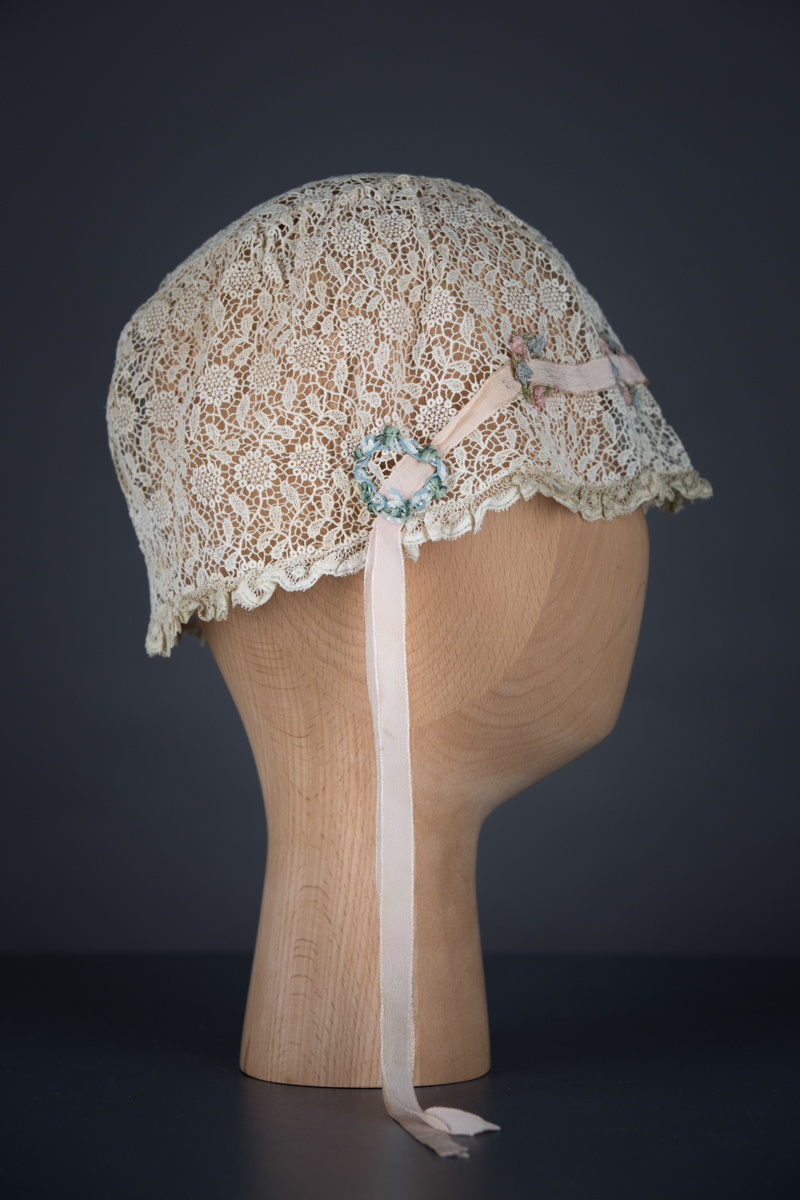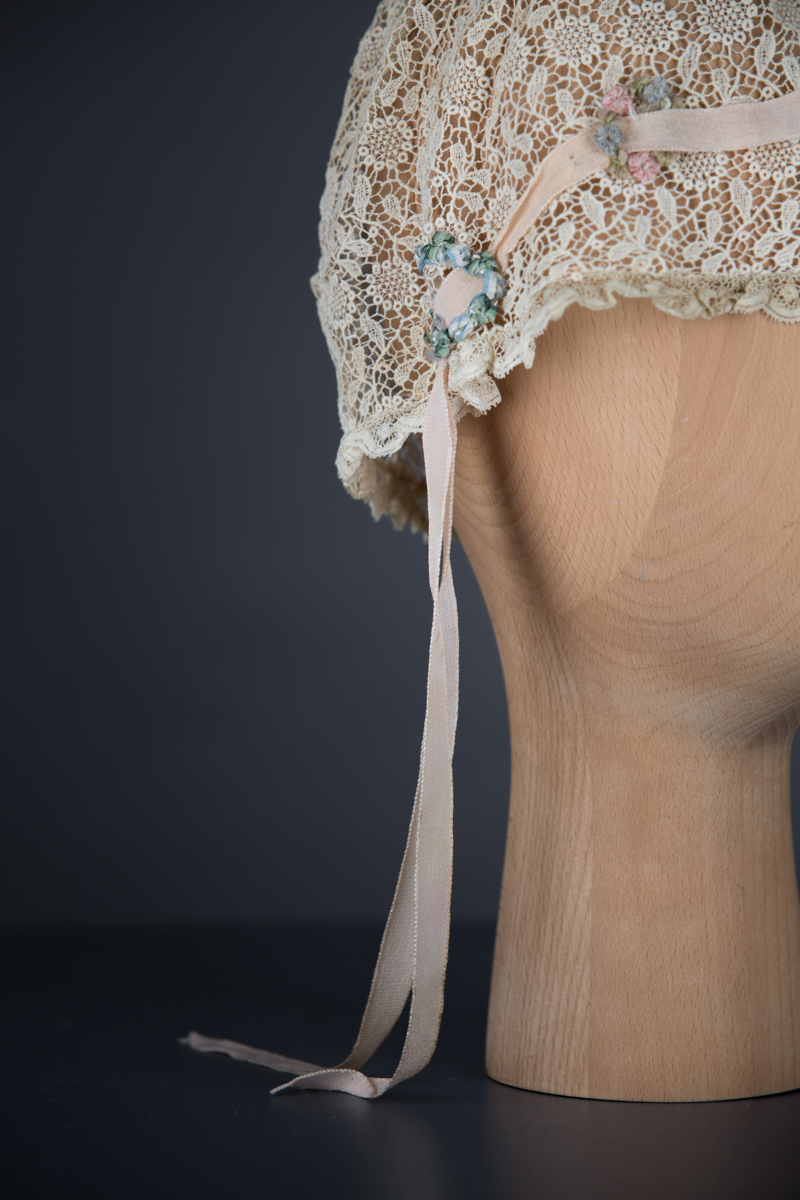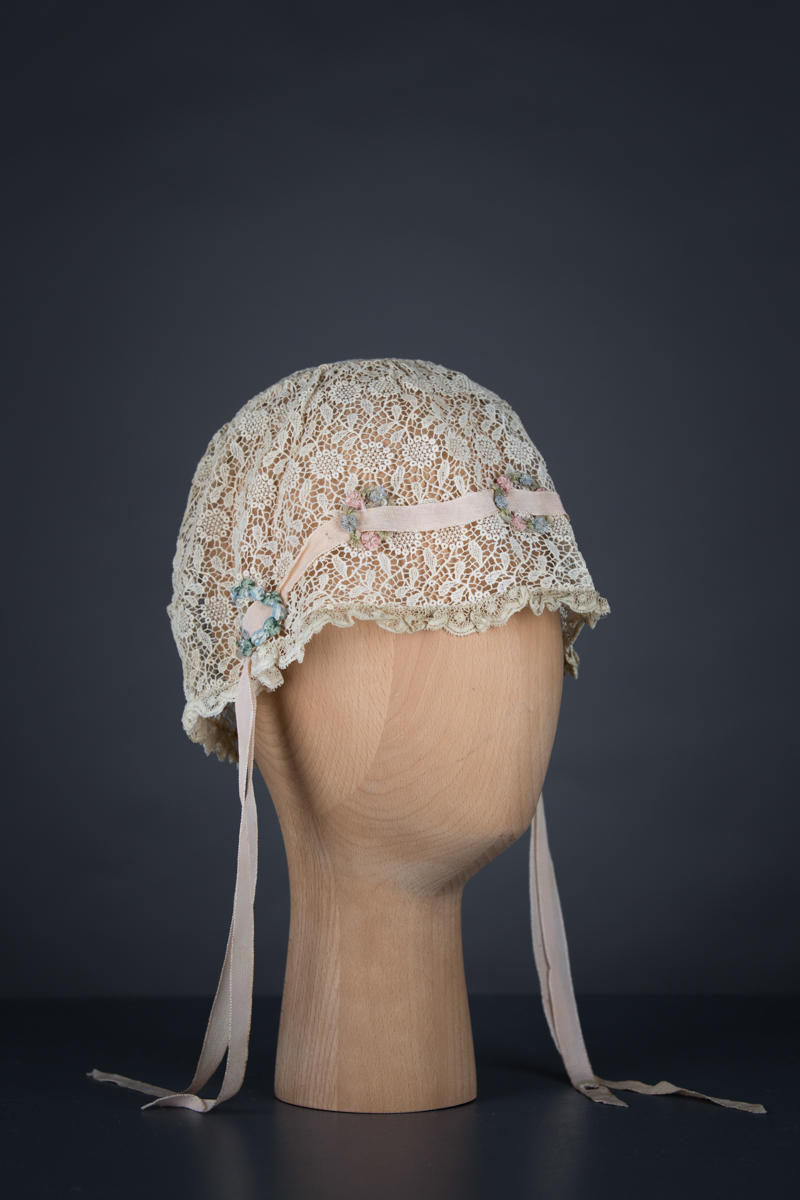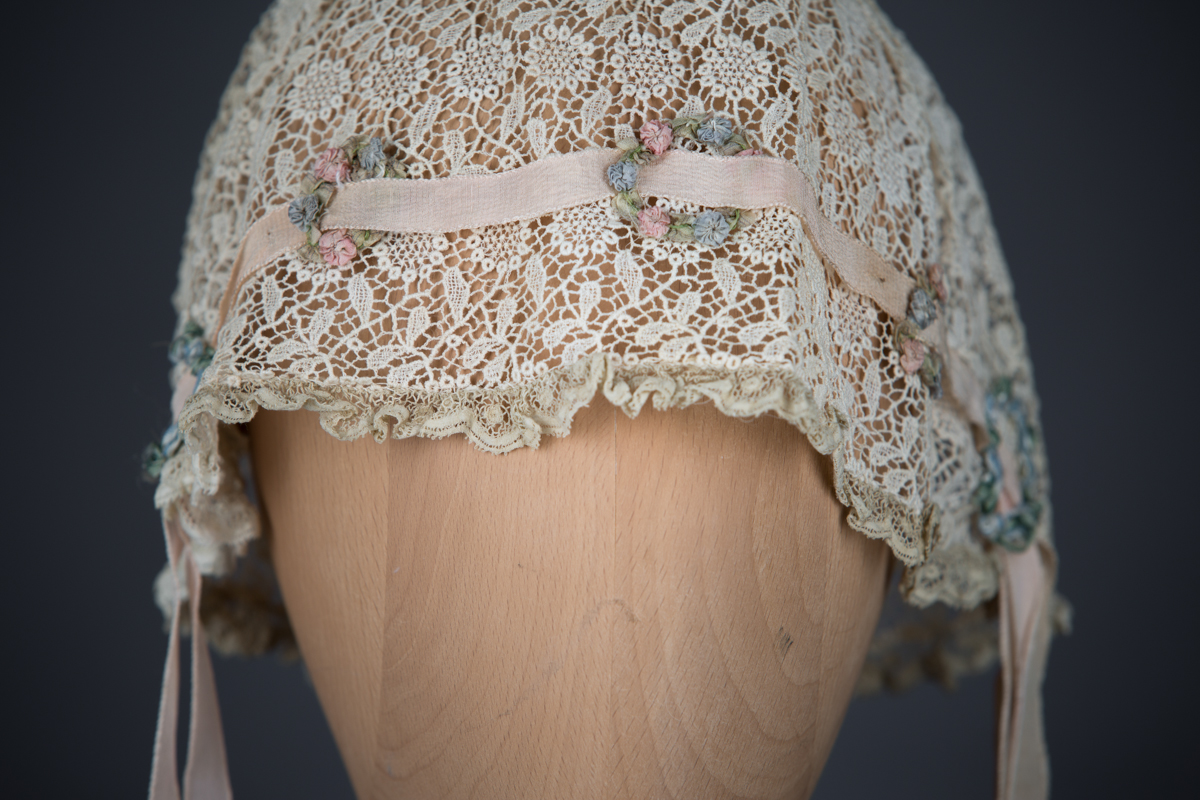Date: c. 1920s
Origin: Great Britain
Fabric: Chemical lace and silk ribbon
Brand: Custom made
A boudoir cap of seamed chemical guipure lace, trimmed with a narrow leavers lace. The cap is embellished with circular motifs of silk ribbonwork roses, with a length of ribbon threaded through the roses and gaps within the guipure lace base.
The boudoir cap was originally a type of lingerie headwear, most commonly worn during the nineteenth to early twentieth centuries. It was originally worn over undressed hair, worn in the privacy of the boudoir alongside nightwear. In the 1910s and 1920s, it would be commonly worn to protect shorter hair styles during sleep. As the designs became more and more elaborate towards the 1930s, it began to be considered more of a decorative hair net. Like other forms of lingerie, boudoir caps were usually made in fine fabrics such as lace, tulle and satin. Embellishment was often profuse, with techniques such as ribbonwork being particularly commonplace.
From the collection of Karolina Laskowska
